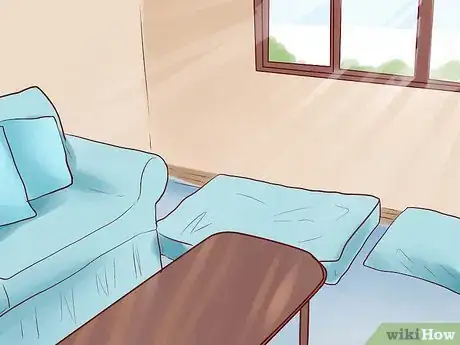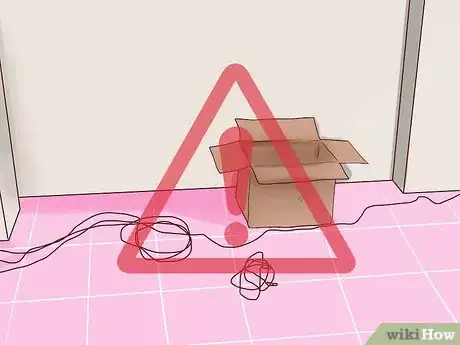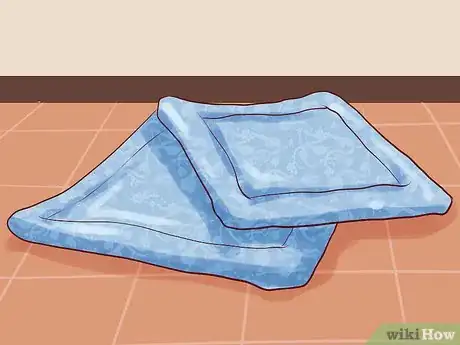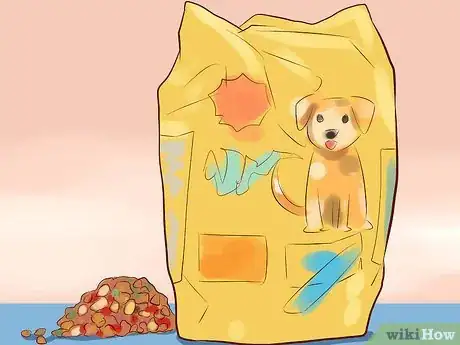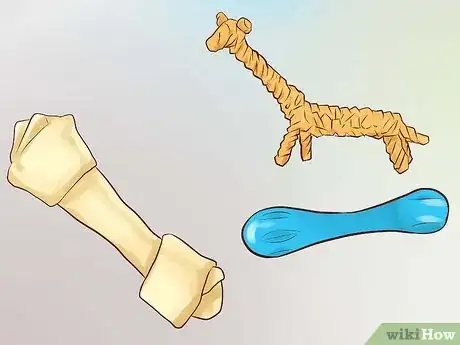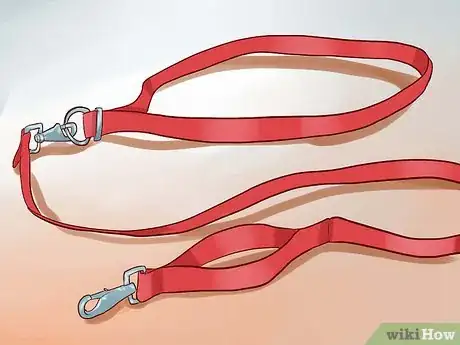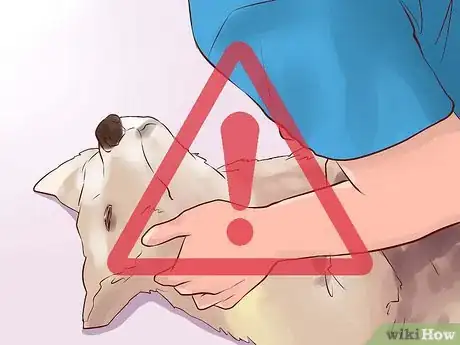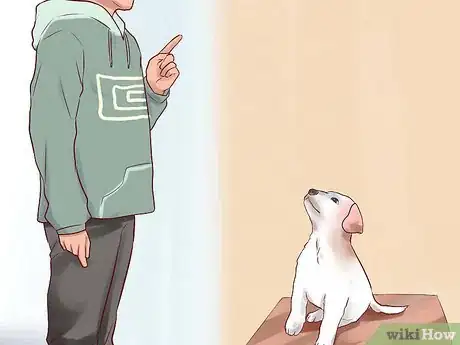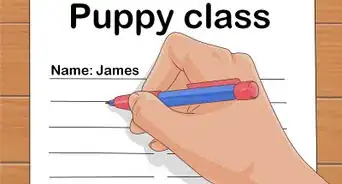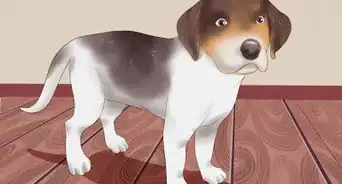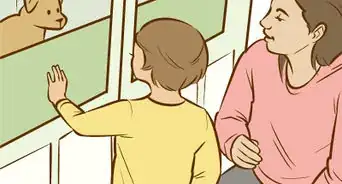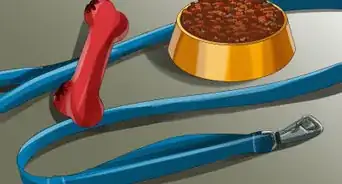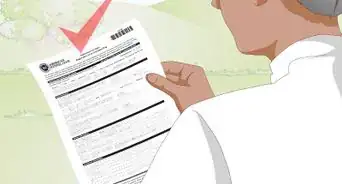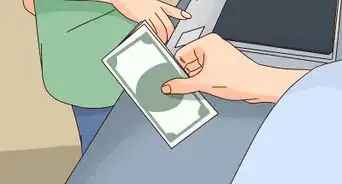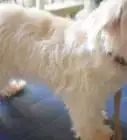This article was co-authored by David Levin. David Levin is the Owner of Citizen Hound, a professional dog walking business based in the San Francisco Bay Area. With over 9 years of professional dog walking and training experience, David's business has been voted the "Best Dog Walker SF" by Beast of the Bay for 2019, 2018, and 2017. Citizen Hound has also been ranked #1 Dog Walker by the SF Examiner and A-List in 2017, 2016, 2015. Citizen Hound prides themselves on their customer service, care, skill, and reputation.
There are 12 references cited in this article, which can be found at the bottom of the page.
wikiHow marks an article as reader-approved once it receives enough positive feedback. In this case, 100% of readers who voted found the article helpful, earning it our reader-approved status.
This article has been viewed 282,982 times.
Before bringing a new puppy home, you need to get all of the necessary equipment such as a crate, bowls, toys, blankets, and a collar. But it is also important to learn how to train your puppy and respond to his behavior. Having all of the right supplies and knowing how to respond to your puppy's behavior will help you and your new companion get off to a great start.
Steps
Preparing Your Home for a Puppy
-
1Create an area in your house just for the puppy. When you first bring your new puppy home, it is a good idea to keep him within the confines of just one or two rooms at first. Common choices include the kitchen, laundry room, or den. This allows your puppy to explore while keeping him safe. It also makes it easier for you to keep track of your puppy and clean up after him.
- If allowed to wander the house freely, a puppy may feel overwhelmed and confused by all the new scents and sounds.
-
2Make your puppy’s area safe. You can puppy-proof the area that you have chosen for your puppy by cleaning it well, removing any wires or other items the puppy may chew, removing ornaments or anything the puppy may bump into or break. Also, make sure that you remove anything from this area you don't want soiled, chewed or scratched.
- Keep in mind that puppies will chew anything, electrical cables are no exception. Make sure they are out of your puppy’s reach.
- Place all hazardous substances out of your puppy’s reach. This includes cleaning products, medications, vitamins, plants, cat litter boxes, tobacco products, garbage, and anything else that your puppy may try to eat.[1]
Advertisement -
3Choose a crate for your puppy. Crate training is a powerful method to train your puppy, but it is not required. If you do decide to crate train your puppy, choose a crate the puppy can stand up, turn around, and lie down with his legs extended.[2] Make sure that there is a soft bed inside the crate as well.
- The idea of crate training is to teach the puppy that the crate is his safe place, kind of like a wild dog’s den.
- Keep in mind that the crate should never be used as a punishment or a prison. It should be a place where the dog goes willingly for a time-out and where you know he is safe when you aren't with him.[3]
- Wire crates are ideal because the dog can see everything around him. This helps him to feel more secure.
-
4Purchase bedding to help your dog sleep comfortably. Choose bedding that is machine washable and that your puppy can snuggle into. Get at least two sets of bedding. That way one set can be in the wash while the other set is in use.[4]
- Make sure your puppy is raised slightly off the ground in his bed, so he avoids draughts at floor level.
-
5Buy equipment for potty training. Even if you will be taking your puppy outside to a toilet spot, it is also a good idea to provide him with a place to relieve himself indoors in case of an emergency. Puppy pads are useful for this - they are like a large flat, absorbent cloth that you can just throw away.
- You can also use newspaper but it is slightly less absorbent, so there is a greater chance that you will end up with some urine on the floor.
- It is also a good idea to get some disposable gloves, a disposable kitchen towel, and some disinfectant spray (enzymatic - not ammonia or bleach based) for cleaning up messes.[5] [6]
- Some dog trainers also recommend getting a timer, and setting it to go off every half hour. Then, every time the timer goes off, take your puppy out for a toilet break.
Buying Other Necessary Items for Your Puppy
-
1Select and purchase a high quality food. Make sure that the food you choose for your puppy is formulated for puppies and that it is appropriate for your dog’s breed. Talk to your vet about what dog foods have the best quality ingredients for your puppy and ask for recommendations about how much and how often to feed your puppy.[7]
- Puppies require more frequent feedings than adult dogs. That means that you will have to feed your puppy three meals per day until he reaches 18 weeks. Then you can switch to two meals per day.[8]
- Provide treats for your puppy as well. Use treats to reinforce your puppy’s good behavior.[9] Doing so will also improve your bond with your new puppy.[10]
- Be consistent with the type of food you feed your puppy. Changing his food overnight can cause severe gastric distress. If you must change him to a new brand, do so gradually. Add about 1/3 of the new food to the old food and increase the amount over the course of a week until you are feeding him only the new food.[11]
- Keep in mind it is quite difficult to feed a balanced homemade diet to a growing puppy. The balance of calcium and phosphate needs to be exactly right in order to provide for growing bones, and this is difficult for even expert nutritionists to achieve. Remember, wild dogs don't live nearly as long as our pets.
-
2Purchase at least two bowls, one for water and the other for food. You will need to have two separate bowls for your puppy’s food and water. Choose bowls that are easy to clean and that are dishwasher safe. It is a good idea to choose ceramic or stainless steel bowls because these cannot be damaged by chewing and they have a smooth surface that does not harbor as much bacteria as plastic bowls.[12]
- Make sure that your puppy always has access to fresh, clean water. Keep the bowl filled and change his water out every day.
-
3Give your puppy a substitute for chewing. Puppies have to chew, so always provide something suitable for your puppy to chew on. Make sure that you choose your puppy’s chew toys with care because many toys are not safe for an unsupervised puppy. If your puppy chews a hole in a toy and swallows some plastic, this can lead to a serious bowel obstruction.
- Select toys or chews that are suitable for unsupervised access, such as a KONG toy. These toys are designed to be filled with treats to keep your puppy entertained and give him a chewing outlet.[13]
- Make sure the toy is large enough that it can't be swallowed whole. If you are trying to decide between two toys, buy the larger one.[14]
-
4Buy a collar (or harness) and leash that is sized for your puppy. Usually collars come in x-small, small, medium, large, and x-large. Choose a collar and leash that is appropriate for your dog’s size and breed.[15]
- For example, smaller dog’s will require a lightweight leash, while a large dog may require a harness and heavyweight leash.
- Get a retractable leash for walking and 2–4 foot (0.6–1.2 m) leash for training.
-
5Stock up on brushes to groom your puppy. Purchase a soft brush to shine your puppy’s coat and a wire or pin brush to eliminate knots and mats. You may also want to get a comb for detail grooming.[16]
- Teach your puppy to enjoy being brushed and groomed from day one. Doing so will help you to avoid problems when the dog is an adult.
-
6Get a dog-safe toothbrush and some dog-safe toothpaste. Dental disease is very common in dogs due to a lack of dental care in most dogs. Introducing your puppy to a dental care at a young age helps him to accept tooth brushing as normal. This way, you can brush your dog’s teeth daily and ensure that he has good dental health as he grows.[17]
- Start getting your puppy used to having your fingers in his mouth by putting some chicken broth or peanut butter on one of your fingers and letting him lick it off. Do this a few times and try to rub a finger on his teeth and gums as you do so.
- After your puppy gets used to your fingers, start introducing the toothbrush. Try to brush your puppy’s teeth once every day for a couple of minutes.
Understanding Training Basics
-
1Understand that dominating your dog will not work. Dominating the puppy in order to make him behave is regarded as old-fashioned now. The observations of wolf packs which lead to the theory of dominance hierarchy were made on wolves kept in a zoo under artificial and stressful conditions. The conditions forced the wolves to behave in an aggressive, challenging way to one another, but wolves in the wild do not behave this way. Wolves in the wild live as family units and cooperate with each other.[18]
- Try to think of yourself as a more mature member of the family who will guide your puppy (a new member) to be well-behaved and offer gentle correction whenever he steps out of line.
-
2Keep in mind that puppies learn by result. Young puppies love to explore and experiment. Puppies will repeat behaviors that give them pleasure, such as playing with a ball. They will not repeat behaviors that get no response or that are unpleasant (such as disturbing a bee and getting stung).[19]
-
3Consider enrolling your puppy in an obedience training course. An obedience training course will help you to develop some appropriate strategies for responding to your puppy’s behavior. It will also give you an opportunity to bond with your puppy and give him a chance to socialize with some other puppies.[22]
- Check with your local pet store, groomer, or veterinarian to find out about puppy training classes in your area.
Expert Q&A
-
QuestionCan puppies be left alone during the day?
 David LevinDavid Levin is the Owner of Citizen Hound, a professional dog walking business based in the San Francisco Bay Area. With over 9 years of professional dog walking and training experience, David's business has been voted the "Best Dog Walker SF" by Beast of the Bay for 2019, 2018, and 2017. Citizen Hound has also been ranked #1 Dog Walker by the SF Examiner and A-List in 2017, 2016, 2015. Citizen Hound prides themselves on their customer service, care, skill, and reputation.
David LevinDavid Levin is the Owner of Citizen Hound, a professional dog walking business based in the San Francisco Bay Area. With over 9 years of professional dog walking and training experience, David's business has been voted the "Best Dog Walker SF" by Beast of the Bay for 2019, 2018, and 2017. Citizen Hound has also been ranked #1 Dog Walker by the SF Examiner and A-List in 2017, 2016, 2015. Citizen Hound prides themselves on their customer service, care, skill, and reputation.
Professional Dog Trainer Don't leave them alone for too long. Puppies are more likely to soil an area again after they have an accident in the house, so it is good to keep a close watch on him so that you can take him to go potty when he needs to go.
Don't leave them alone for too long. Puppies are more likely to soil an area again after they have an accident in the house, so it is good to keep a close watch on him so that you can take him to go potty when he needs to go. -
QuestionHow long can I leave a puppy alone during the day?
 David LevinDavid Levin is the Owner of Citizen Hound, a professional dog walking business based in the San Francisco Bay Area. With over 9 years of professional dog walking and training experience, David's business has been voted the "Best Dog Walker SF" by Beast of the Bay for 2019, 2018, and 2017. Citizen Hound has also been ranked #1 Dog Walker by the SF Examiner and A-List in 2017, 2016, 2015. Citizen Hound prides themselves on their customer service, care, skill, and reputation.
David LevinDavid Levin is the Owner of Citizen Hound, a professional dog walking business based in the San Francisco Bay Area. With over 9 years of professional dog walking and training experience, David's business has been voted the "Best Dog Walker SF" by Beast of the Bay for 2019, 2018, and 2017. Citizen Hound has also been ranked #1 Dog Walker by the SF Examiner and A-List in 2017, 2016, 2015. Citizen Hound prides themselves on their customer service, care, skill, and reputation.
Professional Dog Trainer Puppies should be led outside about every 20–30 minutes, but they can hold their bladder for 1 hour for each month old they are. So a 2-month-old puppy can stay in a crate alone for 2 hours before it needs to be let out.
Puppies should be led outside about every 20–30 minutes, but they can hold their bladder for 1 hour for each month old they are. So a 2-month-old puppy can stay in a crate alone for 2 hours before it needs to be let out. -
QuestionHow long can a puppy be left alone during the day?
 Pippa Elliott, MRCVSDr. Elliott, BVMS, MRCVS is a veterinarian with over 30 years of experience in veterinary surgery and companion animal practice. She graduated from the University of Glasgow in 1987 with a degree in veterinary medicine and surgery. She has worked at the same animal clinic in her hometown for over 20 years.
Pippa Elliott, MRCVSDr. Elliott, BVMS, MRCVS is a veterinarian with over 30 years of experience in veterinary surgery and companion animal practice. She graduated from the University of Glasgow in 1987 with a degree in veterinary medicine and surgery. She has worked at the same animal clinic in her hometown for over 20 years.
Veterinarian Ideally, avoid leaving a puppy for more than 4 hours at a stretch. Be sure to play with the puppy ahead of going out, so they are tired and more likely to sleep.
Ideally, avoid leaving a puppy for more than 4 hours at a stretch. Be sure to play with the puppy ahead of going out, so they are tired and more likely to sleep.
Warnings
- Always remove collars or harnesses before a dog goes into the crate as these items could choke the dog by getting caught on the crate wires or latches.⧼thumbs_response⧽
- When meeting new dogs, approach slowly and never show that you are scared of the new dog. They can sense fear and will try to protect or attack you, depending on their personality.⧼thumbs_response⧽
References
- ↑ http://www.peteducation.com/article.cfm?c=2+2106&aid=3283
- ↑ David Levin. Professional Dog Walker & Trainer. Expert Interview. 19 December 2019.
- ↑ Mattinson, P, (2014), The Happy Puppy Handbook, ISBN 978-0091957261
- ↑ http://www.petmd.com/dog/care/evr_dg_new_puppy_supplies_puppy_checklist
- ↑ David Levin. Professional Dog Walker & Trainer. Expert Interview. 19 December 2019.
- ↑ http://www.petmd.com/dog/care/evr_dg_new_puppy_supplies_puppy_checklist
- ↑ http://www.petmd.com/dog/centers/nutrition/slideshows/tips-for-choosing-puppy-food
- ↑ http://www.petmd.com/dog/puppycenter/nutrition/evr_dg_feeding_schedule_for_puppies
- ↑ David Levin. Professional Dog Walker & Trainer. Expert Interview. 19 December 2019.
- ↑ http://www.petmd.com/dog/care/evr_dg_new_puppy_supplies_puppy_checklist
- ↑ http://pets.webmd.com/dogs/guide/bringing-home-new-puppy?page=2
- ↑ http://www.peteducation.com/article.cfm?c=2+2106&aid=872
- ↑ http://www.petmd.com/dog/care/evr_dg_new_puppy_supplies_puppy_checklist
- ↑ Mattinson, P, (2014), The Happy Puppy Handbook, ISBN 978-0091957261
- ↑ http://www.petmd.com/dog/care/evr_dg_new_puppy_supplies_puppy_checklist?page=2
- ↑ http://www.petmd.com/dog/care/evr_dg_new_puppy_supplies_puppy_checklist?page=2
- ↑ https://www.aspca.org/pet-care/virtual-pet-behaviorist/dog-behavior/brushing-your-dogs-teeth
- ↑ Bradshaw, J, (2012), Dog Sense: How the New Science of Dog Behavior Can Make You A Better Friend to Your Pet, ISBN 978-0465030033
- ↑ Mattinson, P, (2014), The Happy Puppy Handbook, ISBN 978-0091957261
- ↑ David Levin. Professional Dog Walker & Trainer. Expert Interview. 19 December 2019.
- ↑ http://pets.webmd.com/dogs/guide/bringing-home-new-puppy?page=2
- ↑ https://www.aspca.org/pet-care/virtual-pet-behaviorist/dog-behavior/socializing-your-puppy
- ↑ http://www.petmd.com/dog/care/evr_dg_new_puppy_supplies_puppy_checklist?page=2
About This Article
To prepare for a puppy, start by removing anything you don't want to get chewed or scratched, like wires or hazardous products. Then, purchase a bed for the puppy to sleep in and toys for it to chew on, which will help it with its teeth. You'll also want to make sure you have bowls to give the puppy food and water, as well as a good supply of dog food. Additionally, you'll need a collar and leash so you can walk your dog, and a crate for it to sleep in at night. For tips on how to find a suitable collar for your dog and how to train it, read on!
